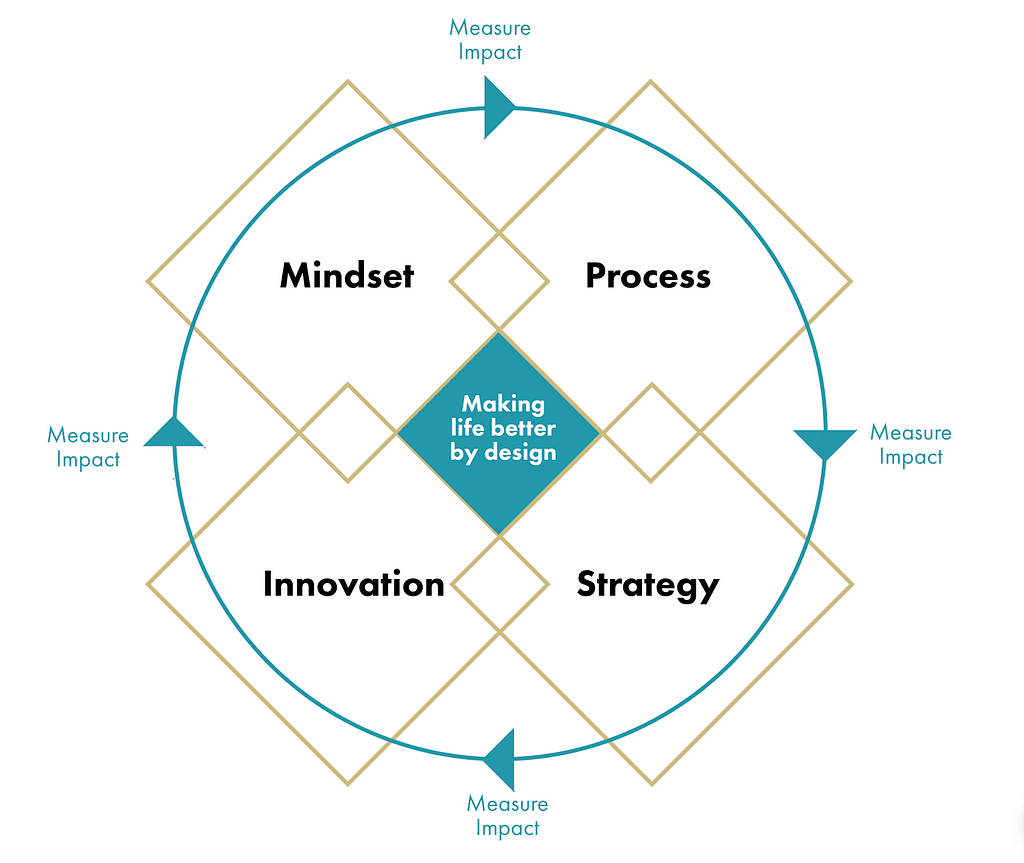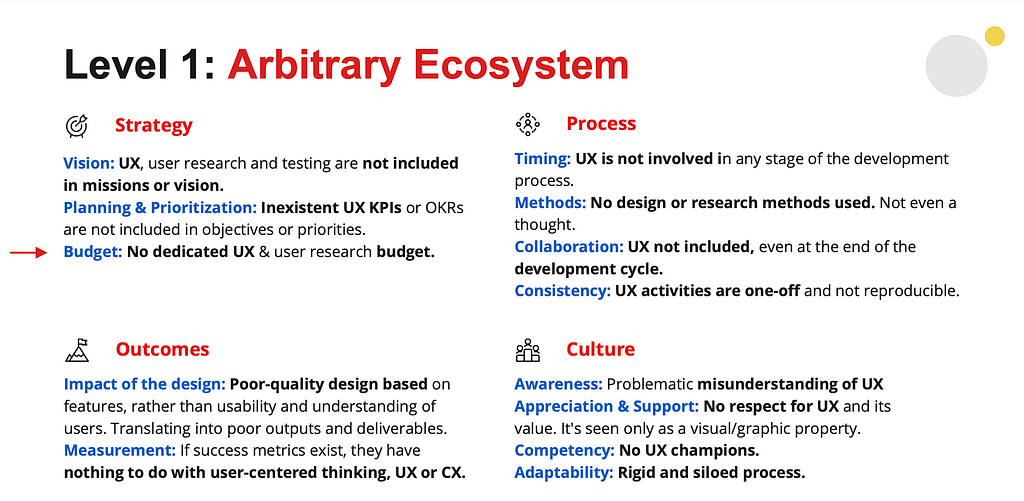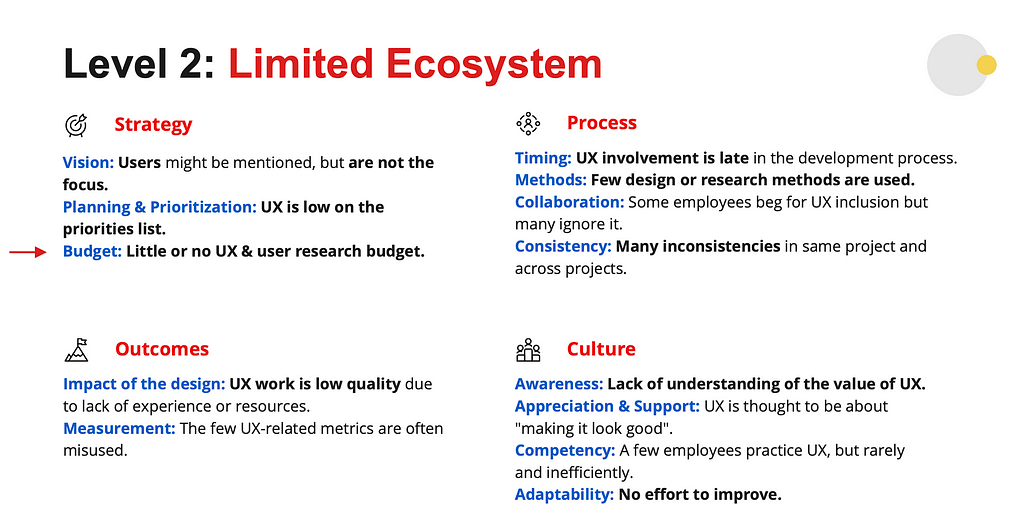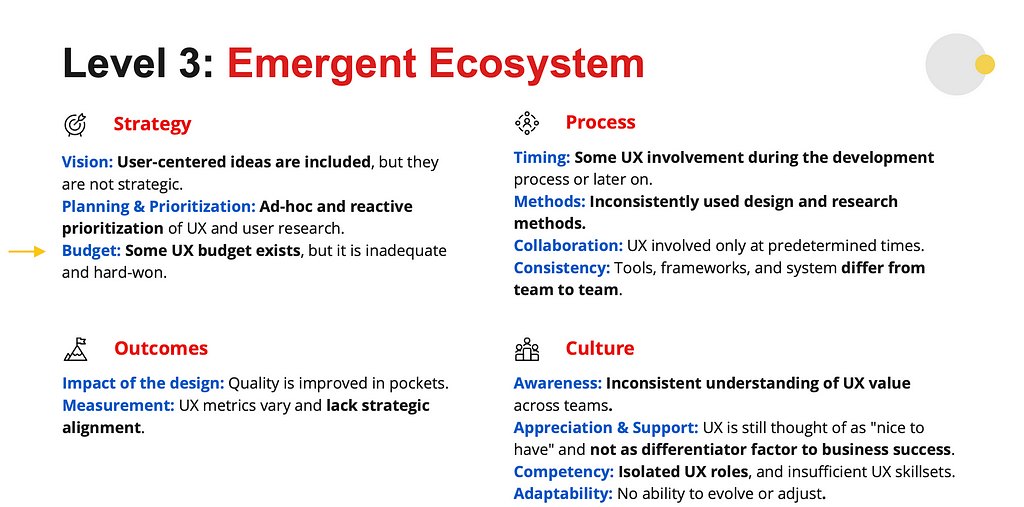Bridging Nielsen and Norman’s Four Factors in UX Maturity with Design Maturity Outcomes
Thinking about how we design strategies, is as important as what products can we create. Design does not evolve on its own, everything is in motion, and signals, and trends shape design every day. From a strategic perspective, we need to look at the internal and external factors to extend the business and end user’s agency and the importance of a strategy that works.
The field of User Experience (UX) design has witnessed significant evolution over the years, driven by the pioneering contributions of influential figures like Jakob Nielsen and Don Norman. Their work has laid the foundation for understanding the crucial factors that contribute to UX maturity.
These guidelines to improve the UX maturity within an organization are a central point to planning a thorough strategy. Building upon this foundation, on my experience, organizations must recognize the need to scale their business design maturity across four critical dimensions: the organization’s mindset over design, the efficiency of their design processes, the quality of their strategic approach, and their innovation capabilities.

This article explores the interplay between Nielsen and Norman’s Four Factors in UX Maturity and the dimensions of business design maturity, offering a structured framework for assessing organizational commitment to user experience.
- Mindset: Mindset over design. Knowledge about and attitudes towards UX, as well as cultivating UX careers and practitioners’ growth.
- Process: Design process efficiency. Systematic, efficient use of UX research and design methodologies and tools.
- Strategy: Customer-centric strategy qualities. UX leadership, planning, and resource prioritization.
- Innovation: Innovation capabilities. Intentional definition of goals and measurement of the results produced by UX work aligned with business vision and goals.
Business Design Maturity Scale
Nielsen and Norman’s four factors in UX maturity provide a lens through which we can understand the evolution of design practices. When connected with Design Maturity Models, these factors offer a roadmap for organizations seeking to enhance their design capabilities. The journey from ad-hoc practices to optimized, efficient design processes involves a deliberate focus on usability, user-centered design, user research integration, and cross-functional collaboration. By embracing these principles, organizations can navigate the complex landscape of design maturity, creating products and experiences that resonate with users and stand the test of time.

Level 1: Arbitrary
UX Leadership — Null or Negative
Problems:
- Absence of UX Design or UX Research
- Absence of awareness for UX capacities
- Rejection of UX influence within the Product Lifecycle
Solvers:
- Introduce and Advocate for UX Deliverables & UX Tools
- Establish Trust and Build Relationships
- Introduce the Voice of the Customer

Level 2: Limited
UX Leadership — 1st Design and UX Processional
Problems:
- Limited UX, is present but uninvolved in Product Lifecycle until after coding
- Limited Awareness, UX is perceived as aesthetics
- Limited Understanding, UX capacities are limited in time and resources
Solvers:
- Leverage Usability Testing as common practice
- Introduce UX Research into the Product Lifecycle
- Establish Design KPIs

Level 3: Emergent
UX Leadership — Management Level
Problems:
- Formalized UX Process
- UX adoption in the Product Lifecycle is not consistent
- UX Emerges as an Influencer
Solvers:
- Tied UX KPIs to business goals
- Quantification of Impact, Segmentation & Personas
- UX Gains Advocators. Share Case Studies and demos internally

Level 4: Integrated
UX Leadership – Director-Level
Problems:
- UX Drives Product Strategy
- UX Research Informs & Drives Product Decisions
- Feature Development based on Segmentation & Personas
- Organizational needs for UX Demand Scalability
Solvers:
- Correlated KPIs with UX Successes
- Quantification of Impact, Segmentation & Personas
- Seek more opportunities to continually build company intuition and knowledge of the user
- Managing and Scaling Demand for UX Resources

Level 5: Integrated
UX Leadership — Executive Level
Problems:
- UX is part of the Global organization Strategy
- User-centered Culture
- Executive Leadership Advocates for UX
Solvers:
- Proven Business Performance. Correlated OKRs with UX Successes. Quantification of Impact, Segmentation & Personas
- UX Research Informs & Drives Product Decisions. Managing and Scaling Demand for UX Resources.
- Data-driven design approach, engaging in market research and vision development. Seek more opportunities to continually build company intuition and knowledge of the user.

Final Thoughts
The connectivity between Nielsen and Norman’s Four Factors in UX Maturity and the dimensions of business design maturity paints a comprehensive picture of an organization’s commitment to user experience. By assessing the organization across these five levels, from basic awareness to a user-centered culture, businesses can tailor their strategies to address evolving challenges and harness the full potential of design in delivering user-centered products and services.
- Mindset Over Design: The concept of prioritizing mindset over design involves a shift in perspective regarding UX, from considering it a mere aesthetic to recognizing it as a crucial strategic element. At its core, this approach entails fostering a user-centered culture throughout the organization, with leaders actively promoting UX as a fundamental business function.
- Design Process Efficiency: As companies evolve through different stages of maturity, the effectiveness of design processes is enhanced. Initially, in Level 1, there are no established processes, but as they advance, they achieve uniformity and scalability in Level 3. Finally, in Levels 4 and 5, design plays a pivotal role in guiding strategic decision-making.
- Strategy Qualities: The characteristics of strategy evolve as we progress from reactive or non-existent in the early stages to being influenced by UX research in the later stages. When we reach Level 5, strategy becomes intricately linked with a culture centered around users, prioritizing continuous innovation and long-term viability.
- Innovation Capabilities: Enhancing innovation capabilities is the ultimate outcome of progressing through the stages of design maturity. This involves overcoming the difficulties associated with scaling design resources at Level 4 and tackling more advanced aspects such as continuous innovation and gaining a deeper understanding of user needs at Level 5.
Four Factors in Design Transformation was originally published in UX Planet on Medium, where people are continuing the conversation by highlighting and responding to this story.